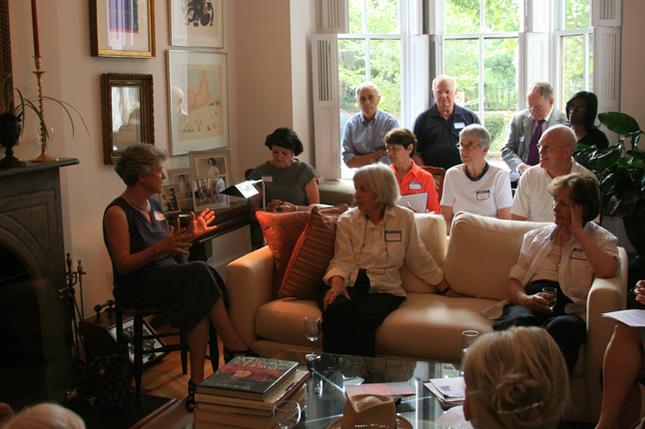Georgetown Village on Track for 2011
By • June 18, 2013 0 1409

Try this sometime: hang around some Georgetown locals for a while, and you’ll notice the word “village” gets tossed about quite a bit.
In everyday usage, it’s probably not a throwback to a time when Georgetown was a village in the literal sense, and it’s certainly not a offhand suggestion that Washington’s most famous district is dusty or parochial. And it’s not just an earthier, more lustrous synonym for dry buzzwords like “community” or “neighborhood,” though that’s a little closer to the truth.
The “village,” in this sense, is about the people who make it tick, the movable parts, the folks who greet each other on the street by name and raise their children together and meet every month in churches and schools to determine their common destiny as neighbors and friends.
The Georgetown Village, as in capital-V Village, owes much to that school of thought, while bringing something quite unprecedented to the table. Conceived largely by Georgetowner Sharon Lockwood and based on a similar concept in affluent neighborhoods such as Boston’s Beacon Hill and, in the District, Capitol Hill, the Village would form a kind of local volunteer cooperative to keep an eye on its aging citizens — helping seniors change a light bulb, drive to a doctor’s appointment or simply keep them company, all while allowing them to “age in place” at home rather than a nursing facility. While less expensive than traditional assisted living programs, beneficiaries will still be required to pay an annual membership fee to cover the non-profit’s operating costs.
An informal meeting of Georgetown residents — who, the Village leadership hopes, will be among the project’s first brigade of volunteers — was held on July 21 at the N Street home of Angie Leith. Sharon Lockwood, a retired World Bank employee who is now carrying the torch for the concept in Georgetown, conceded that at present, though the Village has pulled together advisory and officer boards, the project is little more than a gleam in the eyes of a few handpicked committee members, including Lockwood herself, who will spearhead the fundraising effort. The project is still zeroing in on a final membership fee, and volunteers still will require recruiting and training. Even securing office space is still on the to-do list.
But, as Lockwood and her committee chairs pointed out, the tasks that still need doing haven’t hindered their progress so far. The project is already finalizing its 501(c)3 non-profit tax status, and has been given a green light to begin accepting donations (Lockwood has wasted no time here, already having corralled $25,000 since the first meeting in March). While Georgetown will be the top priority, the project will also cover Burleith, and possibly Glover Park. The organization’s Web site, though still in its infancy, is now online. The Village has also come up with a logo and a catchy slogan: “Neighbors helping neighbors.”
The central focus of the meeting was a presentation by Capitol Heights residents Mike and Judy Canning, who founded a village project in 2007 spanning four square miles between the Capitol and H Street. The Cannings, who have mentored Lockwood extensively on the Georgetown project, described an uphill but successful battle to kickstart the concept in Capitol Hill, which managed to raise $160,000 from neighbors alone by launch day. Even more challenging than fundraising was recruiting dedicated, effective volunteers to perform house calls and services, which now number as many as 200 per month. Keeping volunteers enthusiastic, Judy Canning said, means preserving the village theme, the camaraderie that, when cultivated, blossoms even between strangers.
“Keep it personal,” she reminded the Georgetown gathering. “You may find out there’s a person around the corner who you’ve never met who’s willing to take you to a doctor’s appointment.”
That idea might sound crazy in a big city, but it’s getting noticed. The day after the meeting, the Washington Examiner, which did not attend the meeting but had spoken earlier with Lockwood, ran a short write-up about what’s next for the non-profit. Even Georgetown University, often at loggerheads with neighbors over town and gown spats, has expressed interest in the project. The University’s community relations execs, Linda Greenan and Brenda Atkinson-Willoughby, pledged support for the idea at the meeting and offered to brainstorm closely with the Village leadership.
In order to launch in early 2011 as planned, the Village hopes to recruit enough volunteers in the fall to begin providing tangible assistance to residents. The project will also need to secure $200,000 in donations by the end of the year.
The next recruitment and planning meeting will be held Wednesday, Aug. 25 at the home of Rose-Marie Catonio, 3139 N St., 6 to 7:30 p.m. Twenty-three neighborhood homes have volunteered to host informational meetings this fall before the project takes off.

